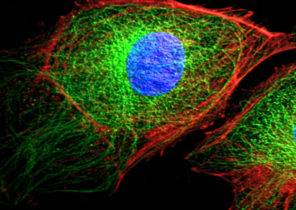A year ago the author of these lines joined the group of people on a yacht on their way to Islay, an island located in the West of Scotland and the famous malt whisky with a peaty smell, which can thoroughly singe the hair in your nostrils.
The Marina was located near the distillery under the brand name Ardberg. This name was painted in huge black letters on the whitewashed wall facing the sea. For Breakfast we were served a calf’s rumen (the first compartment of the stomach of the animal — approx. ed.), guts and a little whiskey. Then was organized the plant tour with extra stops for tasting.
Even at midnight the air was soaked with the thick fumes emanating from the fermentation tank. Working night shifts is something out there tinkering with its contents, which were then sent via pipes to various containers. As we said, the demand was so great that the factory worked 24 hours a day.
Thanks to this dedication of the employees of the factories, in recent years, this business has become truly Golden, and it is estimated at $ 1.5 trillion. For rich people (or for those who wear loafers deck) brands such as Ardbeg (the owner, incidentally, is a French luxury company Louis Vuitton Moet Hennessy — LVMH) may sell rare whiskeys at the price of more than $ 100 per bottle. Sales of champagne reached a record level last year, and as for wines, even a rosé (rosé), to which connoisseurs for a long time treated with some scepticism, became a success.
In financial terms the largest alcohol producers began to produce such combinations of drinks, from which even the bartenders would be covered with a blush. On the background of General decline of production in the West such companies as Diageo and Pernod-Ricard were able to persuade people to purchase higher quality brands and the result has dramatically increased its profit.
The brewers, led by companies Anheuser-Busch InBev and Heiniken, got competitors and reduced prices, creating Dooley, the monopoly of two firms, with high margins in some emerging markets.
However, the most rapid development occurred on the level of hipsters. Innovation in the form of craft beer, gin, local beer and bars where visitors are offered mescal (a drink made by distilling the fermented juice of the agave plant — approx. ed.), filled with violent and boundless energy in the spirit of cocktail-century America of the late 19th century. This helped to revive the culture connoisseurs (gourmet culture) and city life (and they contributed to a bizarre return to fashion of the beard).
Yet covid-19 not a full-blown disaster for the alcohol business. The speed with which in recent weeks have devastated the domestic stocks of alcohol in the wine cabinets Schumpeter (Schumpeter”s drinks cupboard), proves that the consumption of alcoholic beverages is not only to glorify the good times, but in order to survive heavy. Sale for home consumption today has increased dramatically. But even if there is pent-up demand for the means of social “lubrication” for the period after the lifting of restrictions, the Golden age of consumption of alcohol, apparently, has passed on.
The immediate cause of this is social distancing and difficulties of an economic nature. The first one can have a more devastating impact on producers of wine and spirits. They mainly depend from bars, Nightclubs and duty-free shops duty-free (duty-free shops), where a price premium of 30% is common, and that is where they have the opportunity to encourage consumers to experiment with more delicious drinks.
This kind of promotion of premium brands (premiumisation) is extremely important for profit, emphasizes mark Mick (Mark Meek), who heads the company iwsr Drinks Market Analysis, dealing with the collection and analysis of data in this area. The specified direction can suffer because potential customers are afraid of crowds and traveling; the recent wave of infections in the night bars of Seoul is a bad omen. Ongoing special allocation of restaurant space, sport and mass entertainment will further reduce the consumption of beer, wine and champagne. If not vaccines, then many of these activities will take years to rebuild, says Mr. Mick.
The economic situation is another problem. And, apparently, it is more affected manufacturers of beer than other companies that produce alcoholic beverages. At least this was the case during the financial crisis that occurred ten years ago and then the sale of beer and cider is a 6% growth in 2007 received a 1% decline in 2009. Company Anheuser-Busch InBev is particularly vulnerable — it has net debt of $ 96 billion, and she is unable to diversify its work and to produce something other than beer. But affected also the sales of wine and other alcoholic beverages for home consumption. Apparently, the company will actively promote the cheapest brands, thus reducing their margins. Even firm Ardberg trying to cover the lower part of the market and produces now a young five year old whiskey called Wee Beastie.
A regime of self-isolation and its consequences more likely to affect small firms for the production of beer. Some of them were already acquired by the giants in the industry — for example, the company Anheuser-Busch InBev now owns Goose Island brewery and Camden Town. However, many of them continue to sell beer produced on their small business, but in this case it is more difficult to attract clients, comply with the rules of social distancing. Even in good times, many such firms barely covered their expenses. Because they are small enterprises, they have less leverage to promote their products on supermarket shelves. Some of these companies will be sold or will simply cease to exist. This industry will inevitably lose some of his creative impulse.
In addition, on the horizon there are new, longer-term threats — demographics and drugs. Studies show that generation Z, the oldest who recently reached drinking age, are likely to consume less alcohol than their predecessors, says Javier Lastra (Javier Gonzalez Lastra), an employee of the Bank Berenberg Bank. This will have an impact on the alcohol industry in the coming years as the peak of alcohol consumption has traditionally accounted for previously in the period between 18 and 34 years. Partly for this reason in America, which is traditionally the largest alcohol market, total sales of alcoholic beverages are reduced for three consecutive years.
Youth sobriety intersects with the use of marijuana. According to the data published in last year’s report, in which participated experts from the company iwsr Drinks Market Analysis, marijuana getting young people an alternative to alcohol. Millennials in America represent almost half of the “dualists” who both smoke pot and drink alcohol. Covid-19 may further tip the scales in favor of marijuana. With a limited consumption of alcohol Smoking pot has always been kind of a secret pastime. Perhaps in this respect it is better suited to social distancing than to clink glasses at the bar.
Yes, I’ll have enough for abstinence! But still this is not a necessity.
Company for the production of alcohol can find some solace in China, where associated with cjvid-19 fears are gradually fading. Customers once again line up at the bars. The company’s stock price Kweichow Moutai (in China this is the most exclusive brand sorghum “fire water” baijiu), continue to grow rapidly, which indicates a strong desire among the very rich to consume luxury drinks. And in some places the concern is about the fact that electronic Commerce can reorganize the liquor business. Many believe that manufacturers using the technology of delivery of goods directly to the house, not in supermarkets, can give them the opportunity to better understand how to get deeper in the throat of people drinking.
Of course, in this embodiment, there are more opportunities for innovation. However, while the greatest interest new business models based on direct access to the client, and not on new kinds of exotic alcoholic beverages. Innovation in business is always very attractive. But this attraction, after all, different from how the smell of whiskey affects our nostrils.







